It was April of 1938 (remember, cover dates were generally several months early back in the day) that Siegel & Shuster unleashed Superman on the world, changing the nascent comics industry forever. When it became clear that the Man of Steel was a genuine game-changer, everybody wanted in on the superhero market share.
Some attempts were a bit less original than others…
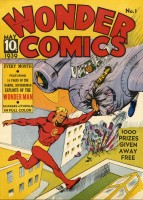 WONDER COMICS #1
WONDER COMICS #1
Writer(s): Will Eisner/S.M. Iger/Adophe Barreaux/Glenda Carol/Bob Kane
Penciler(s): Will Eisner/S.M. Iger/Adophe Barreaux/Glenda Carol/Bob Kane
Inker(s): Will Eisner/S.M. Iger/Adolphe Barreaux/Glenda Carol/Bob Kane
Letterer: Uncredited
Colorist: Uncredited
Editor: Victor Fox
Publisher: Fox Feature Syndicate
Cover Price: 10 Cents
Current Near-Mint Pricing: $24,000
Previously, in Wonder Comics: Will Eisner, along with his partner Jerry Iger, were artists ahead of their time. Forming their own studio, Eisner & Iger did freelance work for many of the comics companies of the time, including Quality Comics, Fiction House and others, guiding or creating properties like Sheena, Queen of the Jungle, Doll Man and Blackhawk. When they got the call from comics entrepreneur Victor Fox, requesting that they create the character of Wonder Man, the team quickly got to work. The creation of Wonder Man is somewhat disputed (Victor Fox’s version doesn’t match Eisner’s, most of the time, and Fox was known to have some personal animosity for DC publisher/co-owner Harry Donenfeld) but what it boiled down to was pretty simple: a near-duplication of Siegel & Shuster’s Superman character. (Perhaps ironically, Will Eisner was reportedly one of the editors who TURNED DOWN the duo’s work when they began trying to sell Superman to studios earlier in the 1930’s.) Either way, Wonder Man’s first adventure hits the ground running…

…that’s a one-panel origin there, transitioning immediately into Fred Carson’s day-to-day life as a “timid radio engineer and inventor.” My daughter, upon seeing this panel, didn’t believe me that people thought that Wondy was a Superman knockoff, instead saying that he looks like (and works in radio like) Captain Marvel. She has a small point, except that CC Beck and Bill Parker’s Big Red Cheese wouldn’t actually debut until early 1940. Either way, Fred is assigned to accompany Brenda (the proverbial boss’ daughter) to the war-torn country of Tatonia. Immediately upon their arrival, things get dicey for the Mightiest Human on Earth…
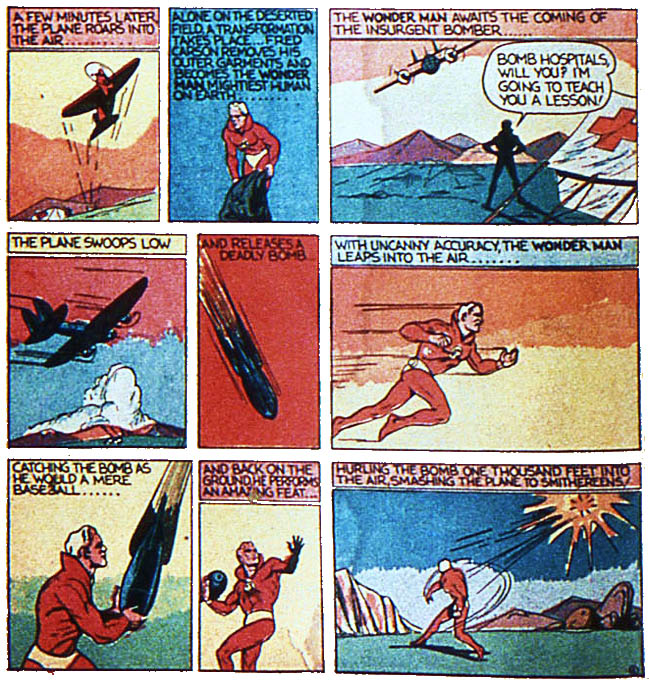
Let’s see: We’ve got the more powerful than a locomotive bit, and his superhuman leaps could conceivably hurtle him over a tall building. Before he can confirm his speed comparable to that of a speeding bullet, though, Brenda’s name changes to Nora, and she and her fiance are captured and taken to the offices of one Generall Atilla, head of the Tatonian something-something-something-Dark-Side.

Wonder Man’s powers are clearly analogous to those of Superman, allowing him to single-handedly rip through Attila’s forces and free the country. He then breaks into the steel vault where Attilla has hoarded all his countrymen’s food, and begins an admirably human relief effort…

The art (by Will Eisner himself) is crude by modern standards, but is remarkably detailed and well-done for 1939, especially given that Eisner/Iger Studios tended to work for speed rather than quality. (If you want to get all technical about it, I suppose they did work for both Speed AND Quality, but that’s neither here nor there…) Wonder Man manages to set up a romance with Nora/Brenda and then heads home to Perry White Mr. Hastings’ office, his inventions having allowed him to broadcast on the end of the Civil War.
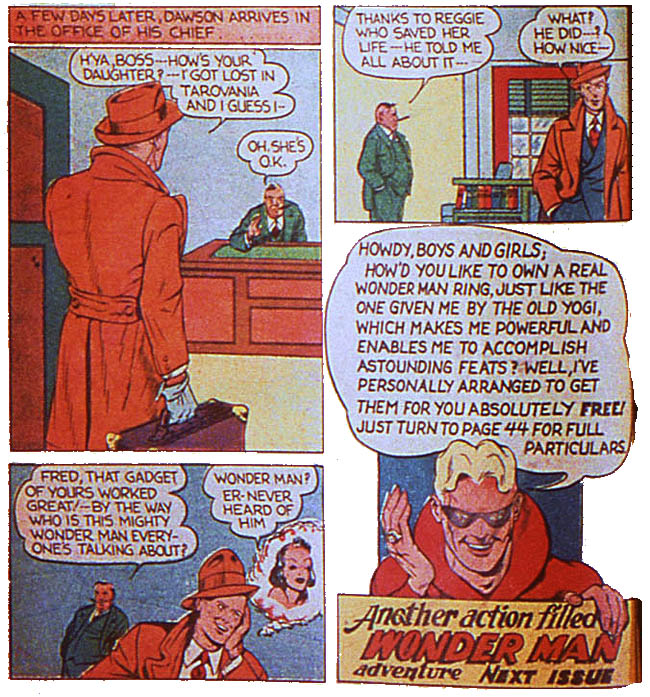
This page is wonderful (no pun intended) for the fact that both the main character and the country we’ve been talking about ALSO change named (Carson to Dawson and Tatonia to Tarovania, unless this is meant to be dialogue to underscore Carson’s milquetoast facade.) Wonder Man’s mask seems to be a last minute affair as well, not appearing on the cover of the book or in some of the panels of the first half of the story, and the overall effect of the story seeming to be a slapdash effort to emulate the success of another property (which, according to many involved, was the intent.) Of course, being a Golden Age comic, Wonder Comics #1 isn’t just about Wonder Man. Our second story features Shorty Shortcake, whose bigfoot comedy design belies the story’s Tintin meets Little Orphan Annie serial adventure-style hijinks.
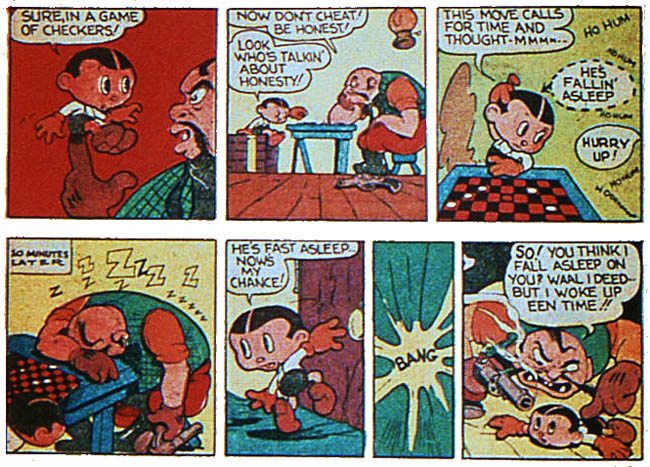
Interestingly, the next story features a female protagonist, Patty O’Day. Also interestingly, she is a reporter and reminds me a bit of Lois Lane (who was an aggressive, two-fisted tough broad type in the Golden Age, before her Flanderization into a harpy who wanted to trap Superman in a marriage.)

Say what you will, parachuting in a skirt is hardcore. Daring, sure, but Patty O’Day WILL NOT compromise on fashion. As for the next tale, “Dr. Fung, Sleuth Of The Orient”, it’s also a bit interesting, as the hero of the piece (a hulking Doc Savage knockoff named Dan) is the sidekick to the Asian professor, making this one of the most diverse Golden Age books I’ve ever read. The good Doctor doesn’t fall prey to the usual caricature of facial features OR pidgin dialogue, instead serving as the brains to balance Dan’s brawn…
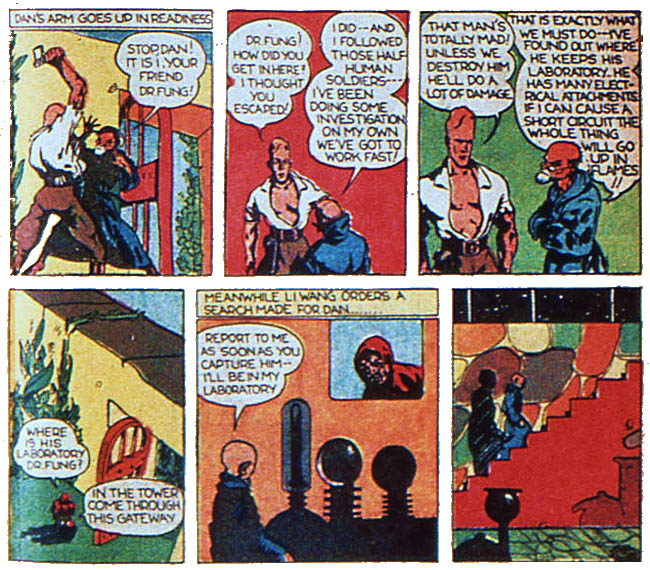
…and also balance his bulbous alien-grey-shaped head. Eisner is back (writing & drawing under the entertaining pseudonym Leon Spuds) for the next story, a western with the standard “comic book western” tropes in play.
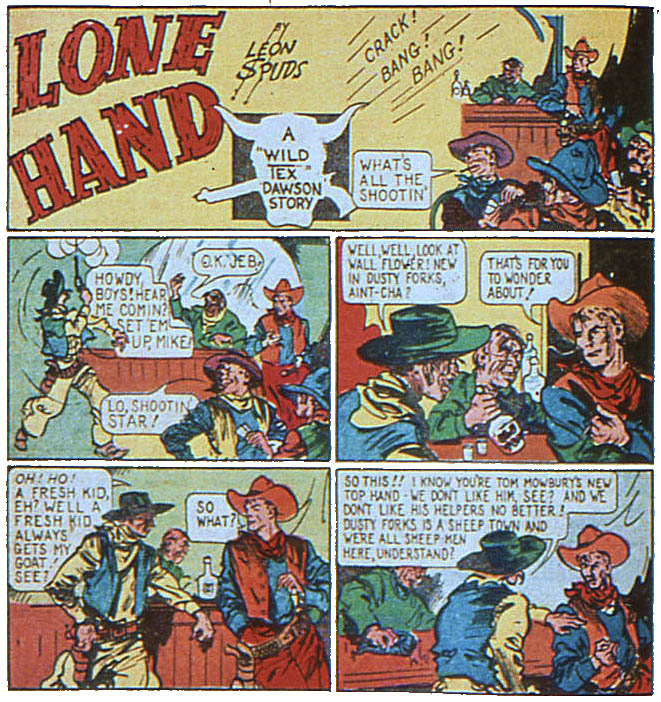
I suspect that Will’s on-panel malaprop of “Dawson” for “Carson” in the first story has a lot to do with this story’s protagonist, Tex Dawson. The book has a lot of single-page “interest” features, such as one talking about the habits of actor Wallace Beery and Laurel & Hardy before transitioning into the espionage genre with “K-5.”
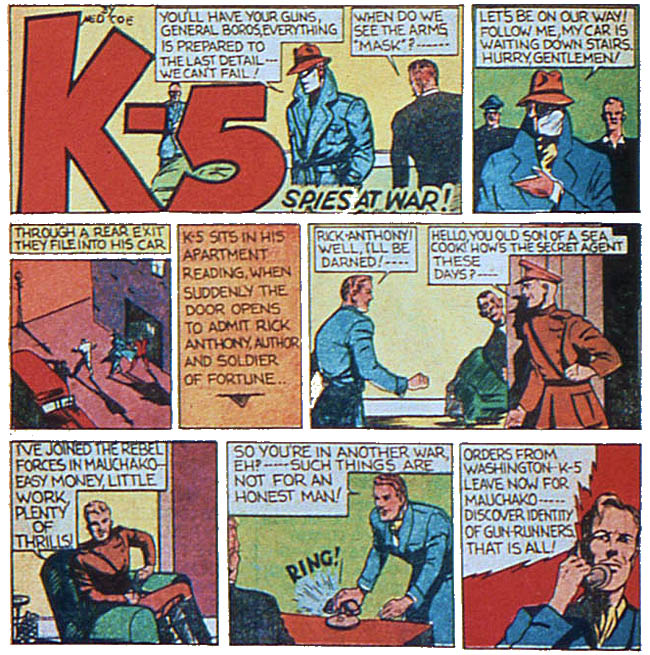
Followed quickly by a crime story featuring “Gangbuster Robinson”, which features some pretty strong art…
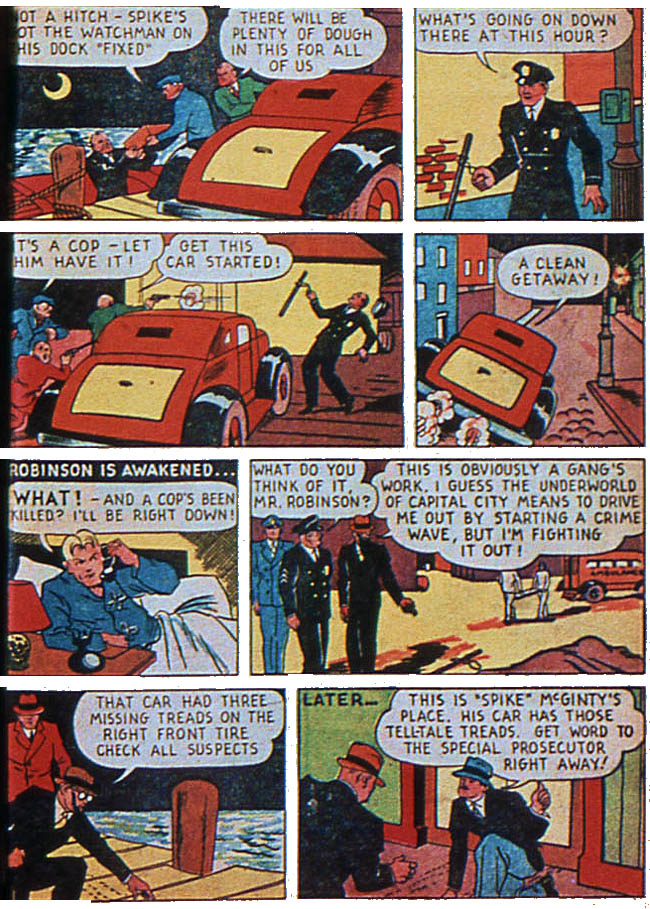
The art in this tale is another pseudonym, this one believed to be another associate of Eisner’s, a man whose work appears in the next story under his own name, with a very familiar style…
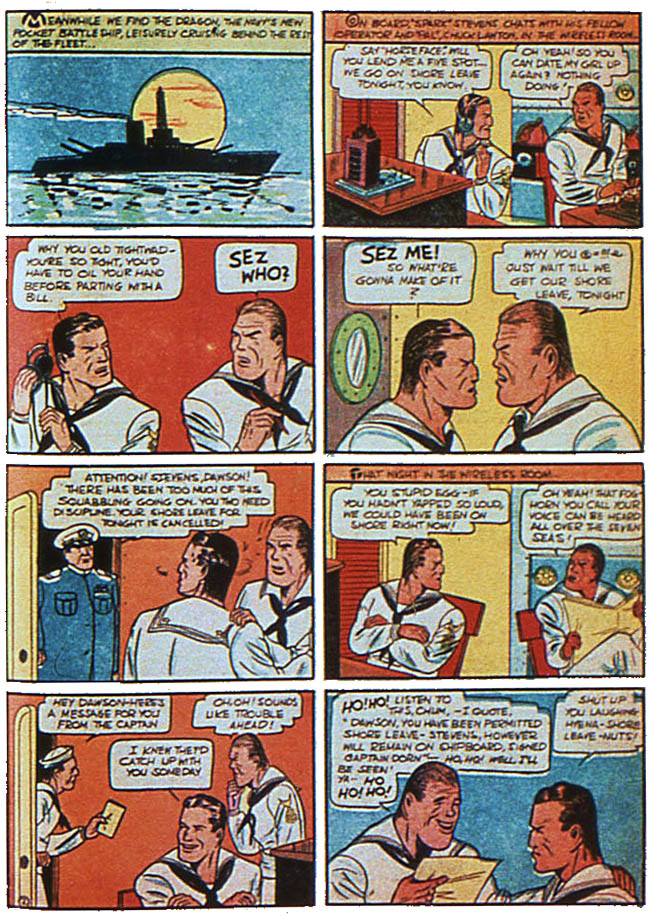
That familiar artist’s name? Bob Kane, whose work in Detective Comics #27 bears the same May ’39 cover date as this issue, but features a character slightly more durable than Wonder Man and his pals.
This issue did have an immediate response, but instead of the groundswell of readers and support that Superman achieved, it elicited a cease-and-desist from Harry Donenfeld, the founder of DC Comics. (Given that Victor Fox set up shop in the very same building as DC Comics probably didn’t hurt that response time…) Wonder Comics #2 featured a different lead before becoming the home (after a title change to Wonderworld Comics) of Golden Age minor-leaguer The Flame. Cheap Trick wrote a song that explains a lot about him, and how he watches shadows move across the wall, feelin’ so frightened, while Eisner went on to create The Spirit, and become a pioneer in the industry. Victor Fox chugged along in comics, notably publishing Stardust The Super-Wizard and originating the character of Blue Beetle, who eventually ended owned by DC Comics. Wonder Man, however, is pretty much just a footnote, a minor story that presages DC’s later Captain Marvel copyright lawsuit. I even wonder if the debut of DC’s own Wonder WOMAN in 1941 might have been influenced by Wondy’s brief existence… In any case, Wonder Comics #1 is an intriguing issue, with some forward-thinking elements but clearly bearing the earmarks of a book rushed into existence, earning 2.5 out of 5 stars overall. If this guy is, as many people seem to believe, in the public domain, SOMEBODY needs to work him into the new DCU…




3 Comments
Speaking of old Golden Age heroes, will you do more reviews on the MLJ heroes, because Archie announced the decision to publish a print version of ‘New Crusaders’?
Jeremy.
Speaking of old Golden Age heroes, will you do more reviews on the MLJ heroes, because Archie announced the decision to publish a print version of ‘New Crusaders’?
Possibly. There are more MLJ, Red Circle and !mpact books in the Retro Review pile, but I’m not sure when I’ll get to them…
I am so happy you made that Jim Croce reference.
“You Don’t Mess Around With Jim” has deep personal significance to me.